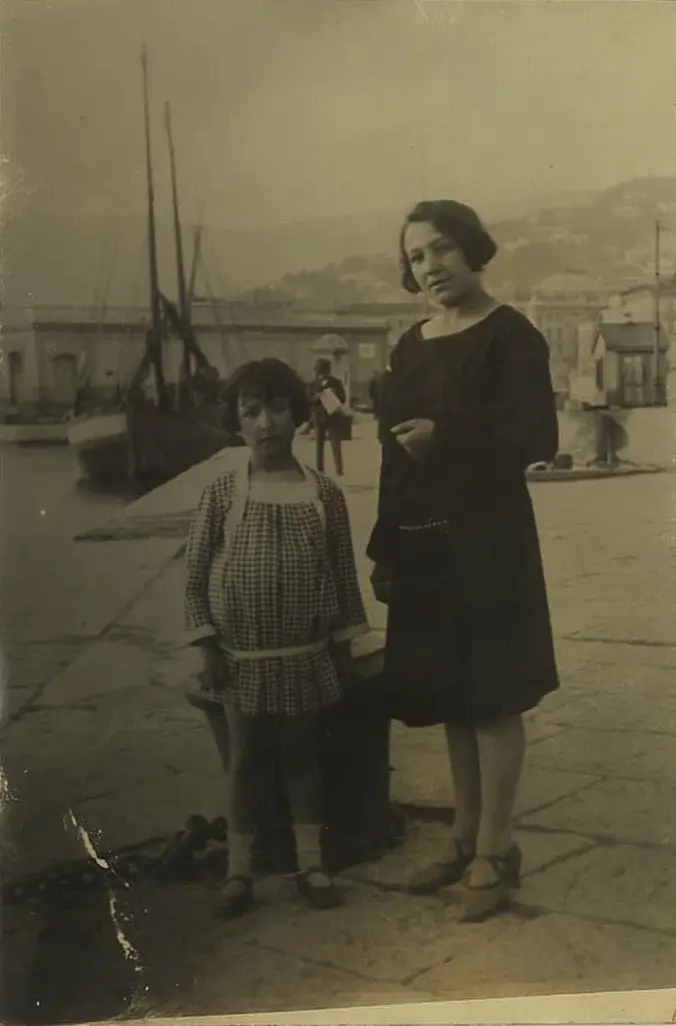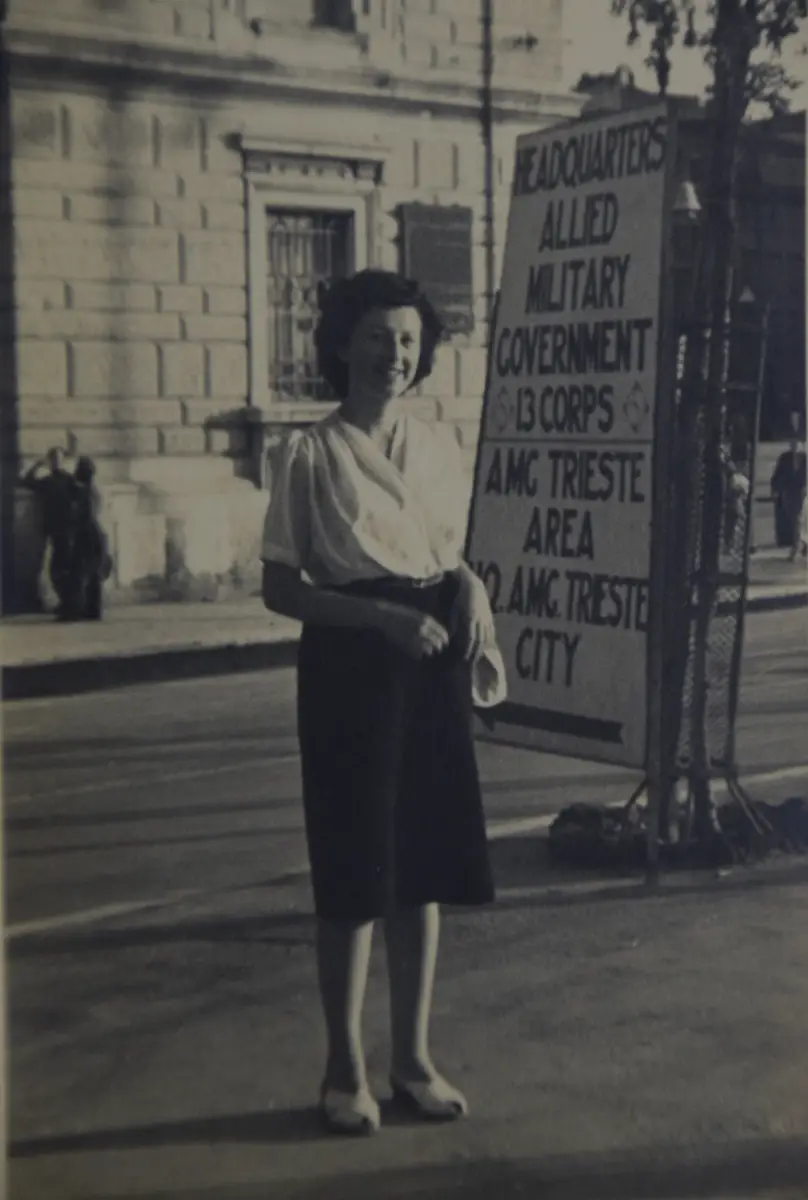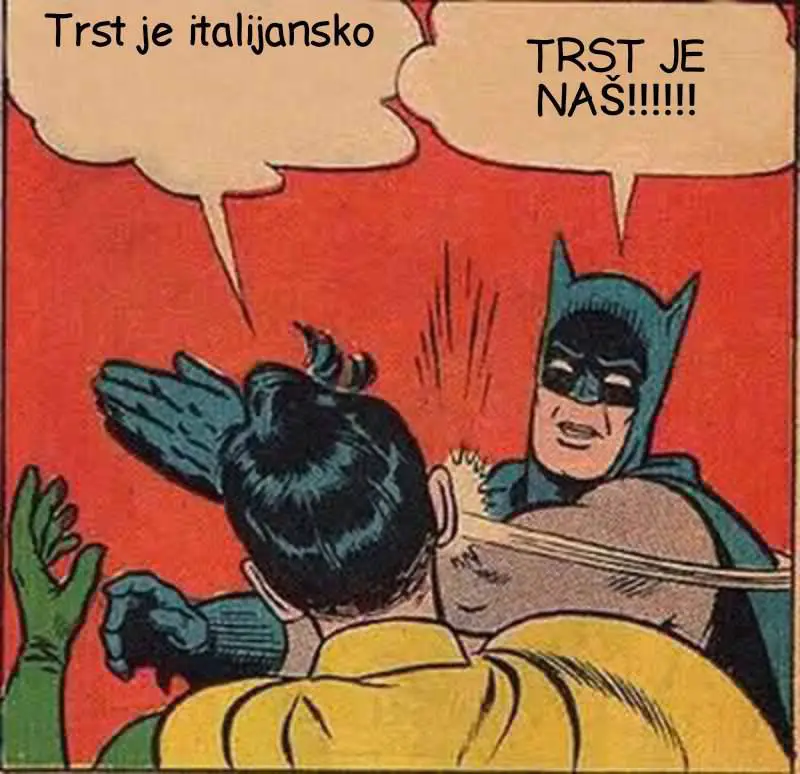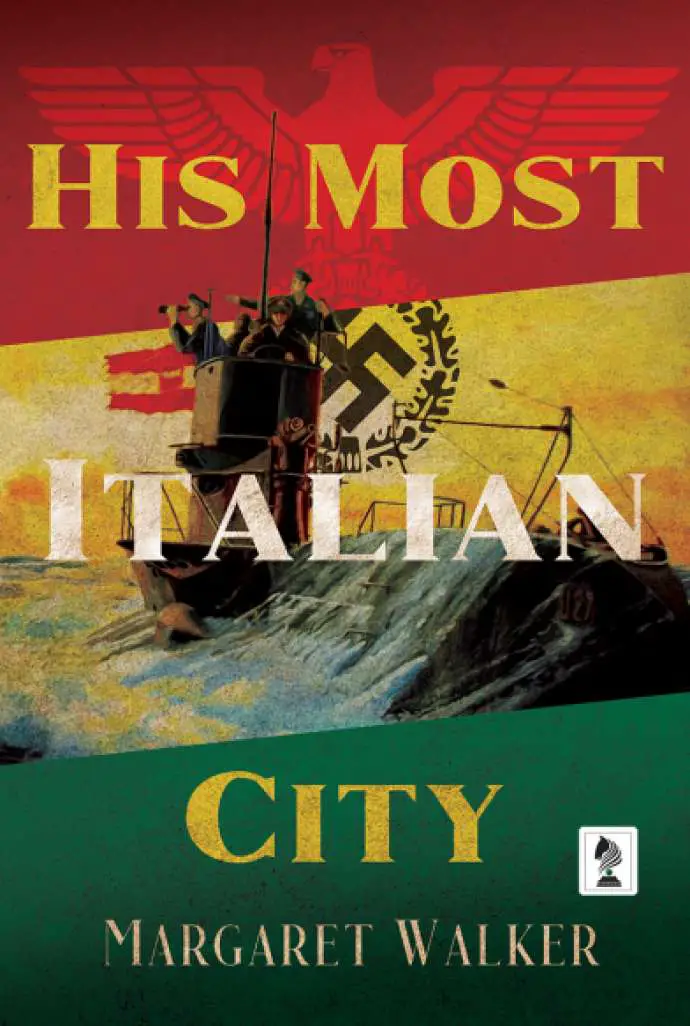Last week saw the return the National Hall (Narodni dom) in Trieste (Trst) to Slovenian hands a century after it was burned down in an act of anti-Slovene violence that’s seen as the start of Fascism. By coincidence, the same day I learned of a new novel about that era, and life in the city that was once home to the largest Slovenian population outside of Ljubljana, His Most Italian City, by Margaret Walker. I sent her some questions, and she was kind of enough to answer…
What’s your connection to Slovenian Trieste?
I was adopted as a baby and my birth mother Silvana (1920 – 2020) was Istrian. It has taken me my whole life to discover her history. She was born in Tar and her father was born in Trieste in 1886. Her grandmother (her mother’s mother) was a Slovenian from a village near the Austrian border. Silvana worked as an interpreter for the Allied Military Government in Trieste after the war. In 1950, she emigrated to Australia.

Silvana in 1927...

...and in 1947
Of Istria, my mother said, ‘We were Austrian, then Austria lost the war. Then we were Italian and Italy lost the war.’ I believe that she just thought of herself as Istrian. She became Yugoslavian after the war and her parents became Italian. Am I confused? Yes.
What can you tell us about the novel?
It’s a work of historical fiction, and I chose that genre so that the history might be more easily accessible to a wide audience.
The story begins in 1928, because that was when Mussolini’s government changed my birth mother’s family name from Micatovich [Micatovič, Micatovik] to Di Micheli. My original intention was to record what she had told us about her childhood in Istria. Because I love sea stories and submarines, I also wanted to incorporate elements of the Austro-Hungarian navy into the narrative, and I began to read about the modern history of Italy and Trieste. My website contains a selected bibliography.

TIGR logo - Wikipedia
The more I researched, the more evident it became that any story about Trieste in the 1920’s had to include the conflict between Fascist Italy and the Slovenians. I read about the anti-Fascist group TIGR (Trst, Istria, Gorica, Rijeka) and the Fascist attack on the Narodni dom in 1920 and I wondered how I could incorporate these into the novel. This was when I came up with the idea of a group of men working for TIGR led by Stefan Pirjevec, a former submarine captain in the Austro-Hungarian navy whose wife had died in the fire in the Narodni dom. The character is based on my neighbour who was a captain in the Australian Merchant Navy. Sydney Harbour, where I live, is a busy passenger port so, whenever I wrote about the port of Trieste in the 1920’s when it was much busier than it was during my recent visits, I had to imagine that it was Sydney.
What other research did you do?
As well as history textbooks and websites, I read several rare books written in the 1800’s about boat journeys from Trieste. The best was Rambles in Istria (RHR, London 1875). I read Necropolis by Boris Pahor in English and Piazza Oberdan in German. Unfortunately, my German’s not very good, but I did my best.
And what else did you learn in writing the book?
I originally trained in mathematics and science and, as my research continued, I noticed that Italy had a huge population compared to the population of Slovenia: 40 million to 1.3 million. I asked myself why such a large country should have felt so threatened by a Slovenian minority in Trieste.
The answer came from the historian Gianfranco Cresciani. Dr Cresciani was born in Trieste and lives in Sydney. He explained the perils that nationalism could hold for some individuals. I am Australian and Australians are not nationalistic. I found the Italian ultra-nationalism (or Fascism) of one hundred years ago very hard to comprehend, particularly its racism and violence, and its vitriolic anti-Slav propaganda. However, both Boris Pahor and Jan Morris (Trieste and the Meaning of Nowhere) noted that the majority of Trieste’s population were conservative, and didn’t want such radical politics.

Trst je naš (Trieste is ours) remains popular in Slovenian memes
Finally, what’s the blurb for His Most Italian City, and where can people find it?
First, you can get a copy from Amazon, Barnes & Noble, Smashwords, or direct from the publisher, Penmore Press. You can also see a review from the American Historical Novel Society, and if you’re curious about me I have a website, too, plus a blog that mainly focuses on submarines.
Now the blurb:
Fascist Italy 1928. Trieste, once the port of the Austro-Hungarian Empire, has become Italian. As fascism strives violently to create a pure Italy along its streets, Matteo Brazzi is forced to choose his loyalties with care. When his office is bombed, the police are baffled, but Brazzi knows who committed the crime, and he knows why. Though he is no seaman, he can easily identify the dark shape that disappeared into the Gulf of Trieste that dramatic night and, as he escapes to Cittanova in Istria, the mysterious vessel follows him down the coast. Brazzi has successfully exploited fascism to protect himself - many people would call him a traitor - but he’s only ever had one real love. Now Nataša is dead and Brazzi owes his share of the blame. Too soon he discovers that not even Mussolini can save him from an enemy who is bent on revenge.






